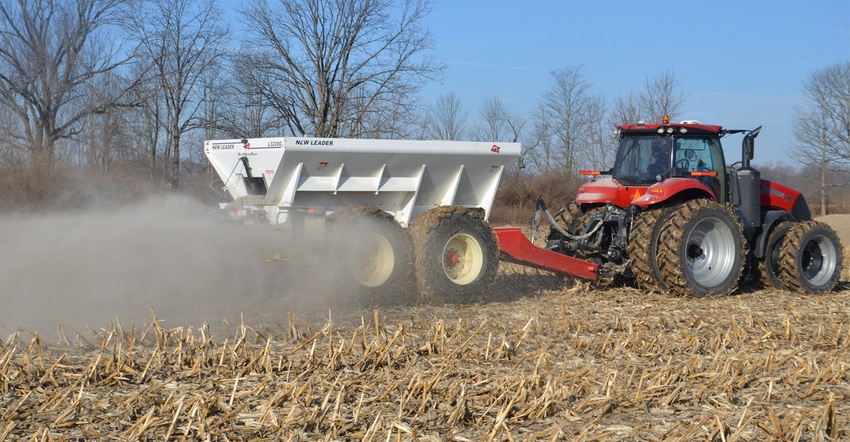January 25, 2022

What is soil pH? Soil tests often refer to the pH of the soil. How does this affect crop growth?
The pH stands for “potential hydrogen,” which determines a plant’s ability to attract hydrogen ions. An ion is an atom or molecule with a total number of electrons and protons that are not in balance. So, the atom or molecule has a net positive or negative electrical charge. This means the molecule must attract hydrogen ions to balance it.
The pH level of soil tells you whether it is acidic or alkaline. Another word for alkaline is “basic.” Soil pH is measured on a scale of 0 to 14. Numbers lower than 7.0 are acidic and higher than 7.0 are alkaline. When the amount of hydrogen increases, the pH decreases and soil becomes more acidic.
Soil pH controls the availability of nutrients that will affect crop growth and yield. Every crop likes a certain range of pH values which are more favorable for its growth. Soil tests can help you decide which nutrients are needed for the crops you grow, and if the soil pH is in a favorable range to allow a specific nutrient to be available for uptake by plants.
To compare availability for various nutrients as soil pH levels change, refer to the Purdue University Corn & Soybean Field Guide. Find the chart on nutrient availability in the general crop management section.
The pH values required by corn, soybeans, wheat and alfalfa are somewhat different for optimum performance. However, you need to achieve a range of pH values suitable for most crops you intend to grow. You can’t have constantly fluctuating levels of acidity or alkalinity.
A pH neutral environment is suitable for most plants. However, corn likes soil pH values of 6.2 to 6.8, whereas soybeans can tolerate more acidic soils of 5.8 to 6.2. For uptake of nutrients by the roots of most crop plants, a proper balance of 5.8 to 6.8 pH is essential.
Adjusting pH levels
How can you adjust pH values on your farm? Most soils tend to become acidic over time due to weathering of soil minerals and release of acidifying metals; leaching away of calcium, potassium, magnesium and sodium; decomposition of organic matter; and application and nitrification of ammonia-based fertilizers.
To maximize yields, balance soil pH depending on the crops you intend to grow. For raising corn, soybeans wheat and alfalfa, you need a soil pH value of 6.0 to 6.8. Note that ideally, the pH should be 6.5 or higher for alfalfa. Balanced pH is so critical because it can affect nutrient availability, soil-applied herbicides and their degradation, potential for aluminum or iron toxicity, as well as nitrogen fixation by legumes.
Applying lime is the primary way to correct low pH levels and raise them into a more suitable range. Soil test reports usually indicate how many tons per acre of lime are needed. Consult an agronomist to determine how much lime you should apply at one time.
Pelleted lime can be applied before planting in emergency situations. However, applying pelleted lime is typically much more expensive than broadcasting lime.
Nanda is director of genetics for Seed Genetics-Direct, Jeffersonville, Ohio. Email [email protected] or call 317-910-9876. Please leave a message.
About the Author(s)
You May Also Like






